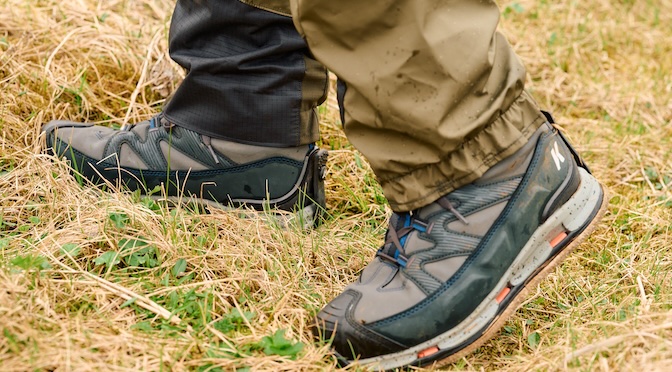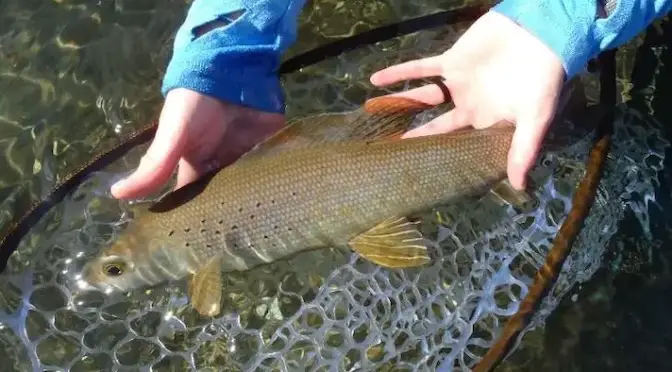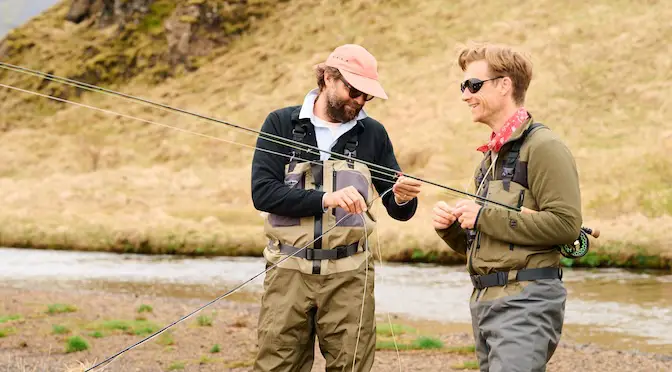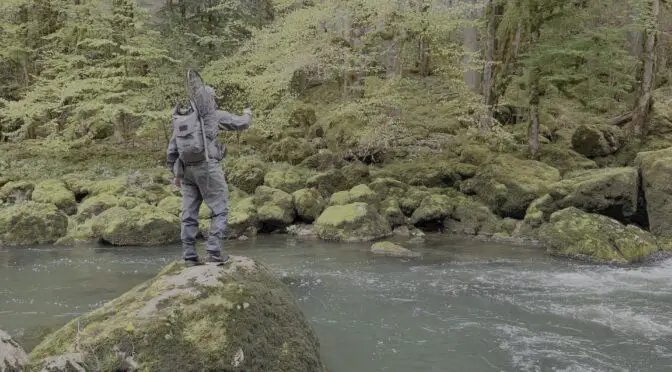Last updated on January 9th, 2024.
- Fly Fishing Steelhead: A How To Guide - February 17, 2023
- Brown Trout in the Outer Hebrides – South Uist Fishing - July 19, 2022
- Fishing Camp – Looking for Kamloops Trout - December 26, 2019
Beaver ponds are an acquired taste. They are hard to find, hard to reach and hard to wade.
They have dark tannin colored water and are filled with downed trees and snags which grab at flies. But most western Washington beaver ponds are low elevation, so they make a great alternative for fishing in the late spring when steelhead streams are closed and trout streams are high with runoff the ice hasn’t yet melted on the Alpine lakes.
It took me three tries to reach this beaver pond. The first two left me and a friend hopelessly stranded in a wilderness of devils club, logging slash and dense regrowth. The third time I found the way along a very faint trail marked with ribbons tied by an angel sent from heaven.
 Ribbon marking hard to find trail to the beaver pond.
Ribbon marking hard to find trail to the beaver pond.
I had the pond to myself except for a beaver which splashed a warning to stay away from its lodge. There were no rises or swirls on the surface, but the fish were there. Healthy coastal cutthroat of 12-16 inches. Many coastal cutthroat migrate to salt water but a few stay in small creeks, beaver ponds and lake year round. They get their name from the dark red slash under their jaws.
 This is why they’re called coastal cutthroat
This is why they’re called coastal cutthroat
I caught my fish on an Olive Carey special. The Carey Special has been a staple of my lake fly boxes for 50 years. It was invented in 1925 in Quesnel, British Columbia, to imitate a dragon fly. It was originally called the Monkey Faced Louise but was rechristened the Carey Special, by Col. Tom Carey who popularized the pattern. The fly found its way south and became the go-to pattern in the seep lakes, lowland lakes and high lakes of Washington. It is a simple tie with cheap, easy to obtain materials. A blessing when you lose lots of flies on beaver pond snags. The soft, long pheasant hackle comes alive when you strip it on a retrieve.
 Carey Specials for lake and beaver pond fishing.
Carey Specials for lake and beaver pond fishing.
Hook: Size 8-12. Use long shank 3X or 4X 8 hook when imitating dragon flies. Use size 10-12 3X hook when imitating damsel flies. Use 10-12 short shank hook when imitating mayfly or caddis fly nymphs.
Thread: Olive 8/0 monocord.
Tail: Dyed olive Chinese pheasant rump.
Body: Olive dubbing. Thick when imitating dragon flies or damsel flies. Thin when imitating other nymphs.
Rib: Silver tinsel or gold tinsel (optional).
Hackle: Dyed olive Chinese pheasant rump.
You can also tie a black carey with black dubbing and dyed black Chinese pheasant rump or a self-body Carey with a wound natural brown-green Chinese pheasant feather for the body and another Chinese pheasant feather wound as hackle.
 A cutthroat is released to freedom in beaver pond.
A cutthroat is released to freedom in beaver pond.






